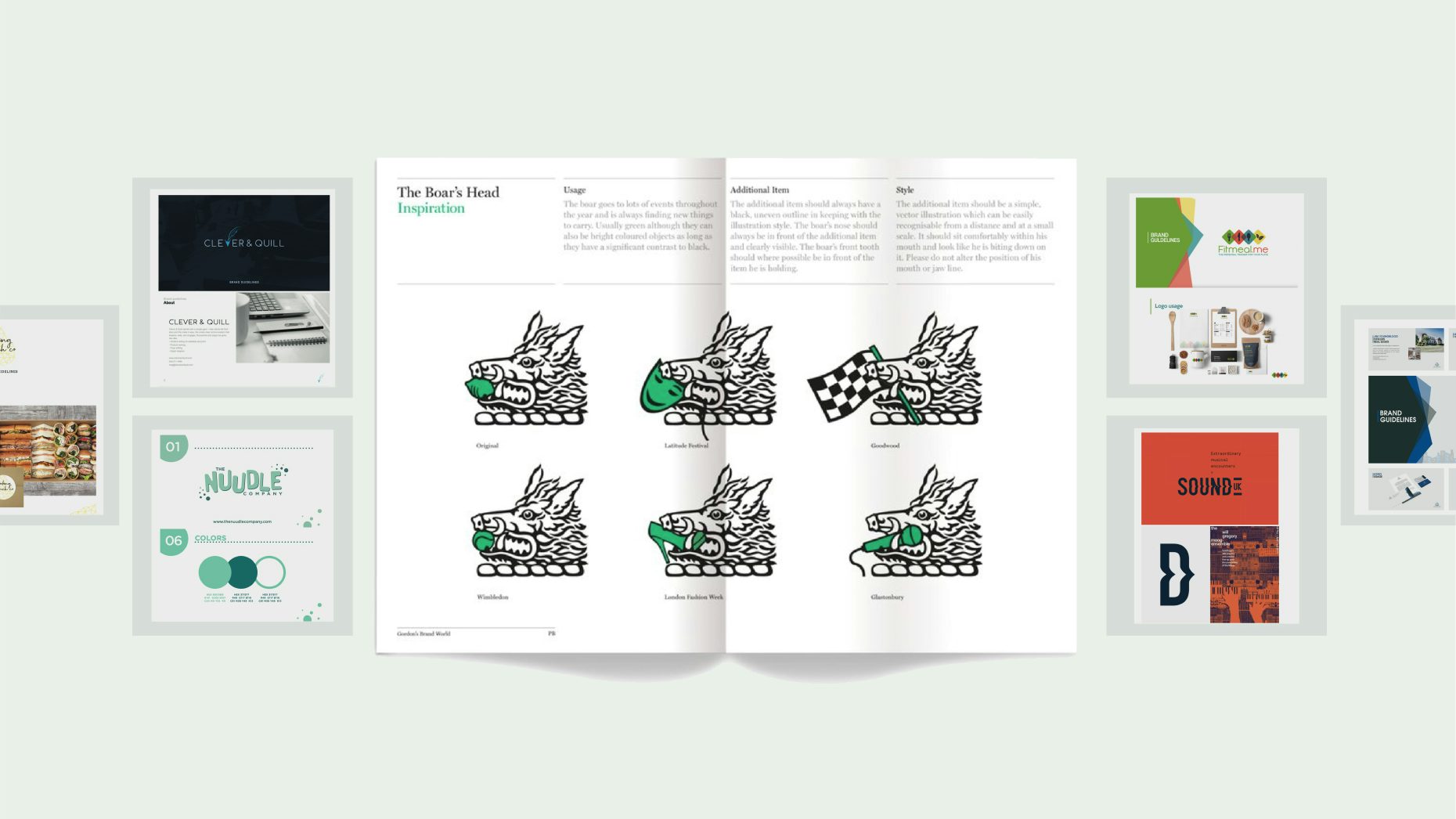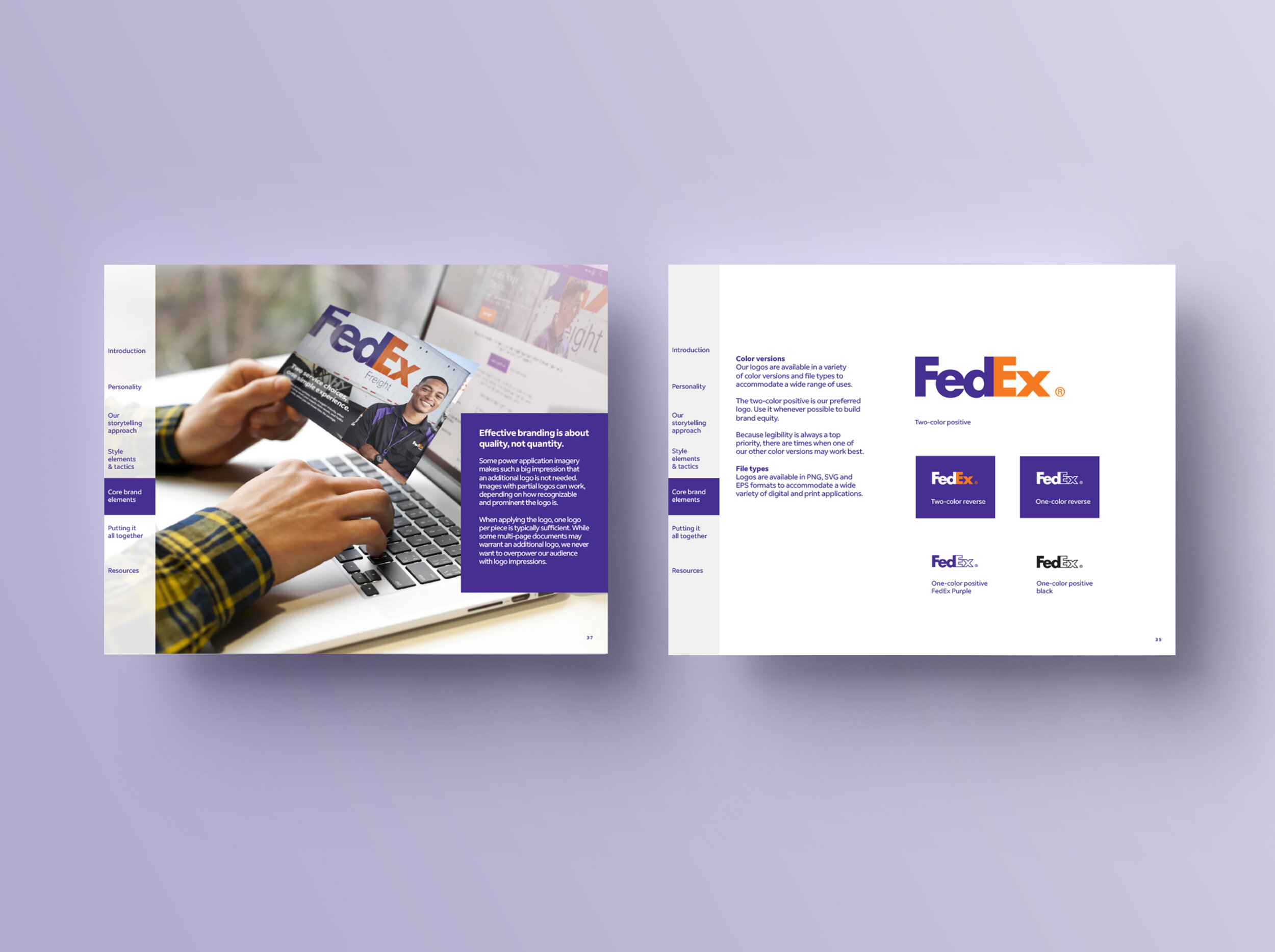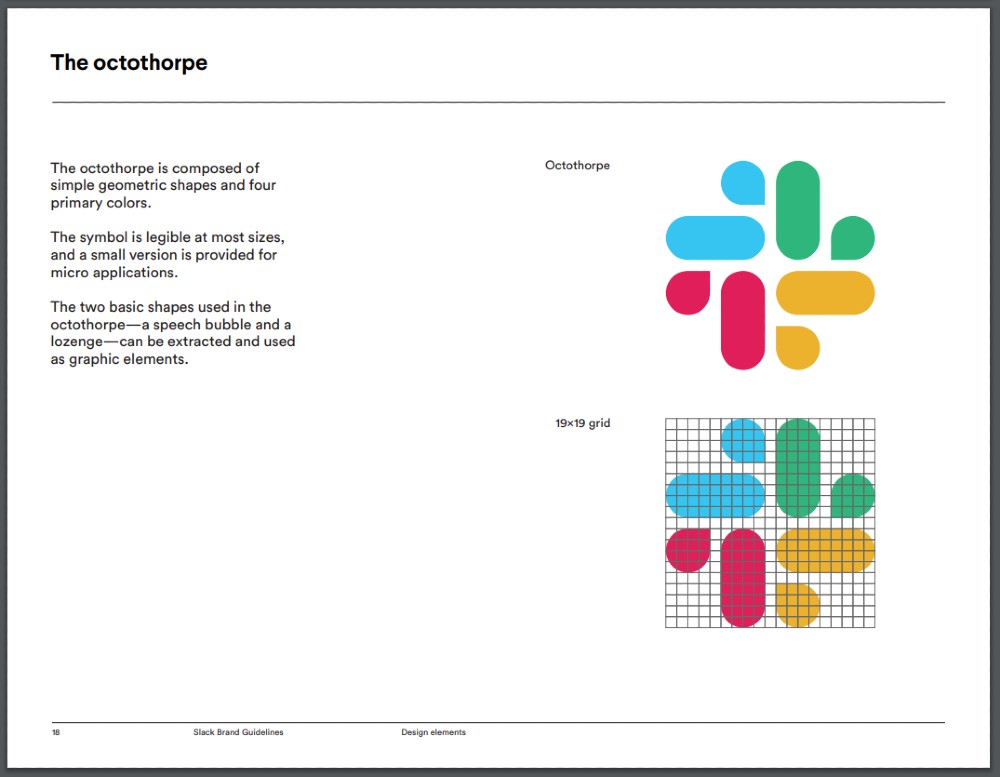Why brand guidelines
 Brand guide design, also known as brand guidelines, are documents that provide a set of rules and guidelines for maintaining consistent brand identity and messaging across all communications and touchpoints. Brand guidelines serve as a reference for internal and external stakeholders, such as employees, partners, vendors, and designers, to ensure that the brand is represented accurately and consistently in various contexts.
Brand guide design, also known as brand guidelines, are documents that provide a set of rules and guidelines for maintaining consistent brand identity and messaging across all communications and touchpoints. Brand guidelines serve as a reference for internal and external stakeholders, such as employees, partners, vendors, and designers, to ensure that the brand is represented accurately and consistently in various contexts.Here are some key reasons why brand guide are important:
- Brand consistency: Brand guidelines help establish a consistent and cohesive brand identity by providing instructions on how to use brand elements such as logos, colors, fonts, and imagery. Consistency is critical for building brand recognition, establishing trust, and creating a unified brand experience for customers.
- Brand protection: Brand guidelines help protect the integrity of the brand by setting clear usage guidelines and restrictions. They ensure that the brand elements are used in a way that is consistent with the brand’s values, positioning, and messaging, and prevent unauthorized or inappropriate use of the brand assets that could dilute or damage the brand’s reputation.
- Design efficiency: Brand guidelines provide design specifications that help designers create marketing materials, advertising campaigns, and other brand-related content more efficiently. By providing clear guidance on how to use brand elements, designers can save time and effort, and produce consistent and on-brand materials.
- Collaboration and communication: Brand guidelines serve as a reference for internal and external stakeholders, helping to align teams and ensure that everyone is on the same page when it comes to the brand’s visual and verbal identity. They facilitate communication and collaboration among different teams, departments, and external partners involved in creating brand assets.
- Flexibility and scalability: Brand guidelines provide a framework that allows the brand to evolve and adapt over time while maintaining consistency. They can be updated and expanded as the brand grows or changes, ensuring that the brand remains relevant and effective in different contexts, markets, and channels.
Overall, brand guidelines are essential for maintaining a consistent, recognizable, and cohesive brand identity, protecting the brand’s integrity, improving design efficiency, facilitating collaboration, and enabling flexibility and scalability as the brand evolves.
Best brand guide
 Here are some key elements to include in brand guideline examples:
Here are some key elements to include in brand guideline examples:
- Brand Story and Purpose: Explain the story and purpose behind your brand, including its history, values, and mission. This sets the tone for your brand and helps establish its identity.
- Brand Identity: Include your brand’s logo, typography, color palette, and any other visual elements that make up your brand’s identity. Specify guidelines for their usage, such as minimum size, clear space, and color variations.
- Tone of Voice and Messaging: Define the tone of voice and messaging that should be used in all brand communications, whether it’s on your website, social media, or other marketing materials. This includes guidelines on language, style, and messaging that align with your brand’s personality and positioning.
- Brand Usage: Provide guidelines on how your brand should be used in various contexts, such as on different types of media (print, digital, social), backgrounds, and layouts. This can include rules for logo placement, tagline usage, and overall visual consistency.
- Brand Assets: Include downloadable assets, such as logo files, font files, and other brand-related graphics, that can be used by your team or external partners to ensure consistent brand usage.
- Brand Extensions: If your brand has sub-brands, product lines, or other brand extensions, provide guidelines on how they should be used in relation to the main brand, and how they should maintain visual and verbal consistency.
- Examples: Include examples of how your brand should be applied in real-world scenarios, such as mockups of marketing materials, social media posts, and other relevant examples to serve as visual references for your team.
- Legal Guidelines: Include any legal considerations related to your brand, such as trademark usage, copyright information, and disclaimers.
- Collaboration Guidelines: If you work with external partners, provide guidelines on how they should use and represent your brand in their communications and materials.
- Updates and Revisions: Clearly state how updates and revisions to the brand guide will be handled, including who is responsible for maintaining and updating the brand guide over time.
Remember, the best brand guides examples is one that is tailored to your specific brand and audience, and is easy to understand and follow. It should serve as a comprehensive resource for your team and partners to consistently represent your brand across all touchpoints, helping to build brand recognition and establish a strong brand identity.
What is brand identity design
 Brand identity design is the process of creating and visually representing the unique and consistent visual elements that define a brand’s personality, values, and overall image. It is a crucial aspect of brand building and marketing, as it helps establish recognition, differentiation, and emotional connection with the target audience.
Brand identity design is the process of creating and visually representing the unique and consistent visual elements that define a brand’s personality, values, and overall image. It is a crucial aspect of brand building and marketing, as it helps establish recognition, differentiation, and emotional connection with the target audience.
Brand identity design typically includes the following elements:
- Logo: The visual representation of the brand, usually in the form of a unique and recognizable symbol or mark that embodies the brand’s essence.
- Color palette: A carefully selected set of colors that represent the brand’s personality and evoke specific emotions.
- Typography: The fonts and typography used consistently across all brand materials, such as logos, website, and marketing materials, to maintain visual consistency.
- Imagery: The use of images and visuals that align with the brand’s values and messaging, creating a consistent visual language.
- Brand guidelines: A set of rules and guidelines that provide instructions on how the brand elements should be used consistently across all touchpoints, ensuring brand consistency.
- Packaging and collateral design: Design of packaging materials, such as product packaging, business cards, letterheads, and other printed materials, that reflect the brand’s visual identity.
- Digital assets: Design of digital assets, such as website, social media graphics, email templates, and digital banners, that are aligned with the brand identity.
The purpose of brand identity design is to create a cohesive and memorable visual representation of the brand, helping it to stand out in a competitive market, build recognition and loyalty, and convey its unique personality and values to the target audience.
Branding guide cost
 Here a rough estimate of the cost range for a branding guide.
Here a rough estimate of the cost range for a branding guide.- DIY Branding Guide: If you decide to create a branding guide yourself using online resources and templates, the cost could be minimal or even free. You may need to invest in design software or online tools, which could range from a few dollars to a monthly subscription fee.
- Freelancer or Small Agency: Hiring a freelance graphic designer or a small branding agency could cost anywhere from a few hundred to a few thousand dollars for a basic branding guide. This could include a logo, color palette, typography, and basic brand guidelines.
- Mid-sized Agency: A mid-sized branding agency with a team of experienced designers and brand strategists may charge several thousand to tens of thousands of dollars for a comprehensive branding guide. This could include extensive research, brand positioning, market analysis, brand messaging, logo design, visual identity, tone of voice, and comprehensive brand guidelines.
- High-End Agency or Branding Consultancy: Top-tier branding agencies or branding consultancies with a strong reputation and a large team of experts may charge tens of thousands to hundreds of thousands of dollars for a premium branding guide. This could include in-depth market research, brand strategy, brand architecture, brand naming, logo design, visual identity, brand voice, brand story, brand guidelines, and ongoing brand management.
It’s important to note that these are rough estimates, and actual costs can vary greatly depending on the specific requirements of your branding project and the expertise of the branding agency or designer you choose to work with. It’s recommended to obtain multiple quotes and discuss your project details with potential branding partners to get accurate cost estimates tailored to your needs.
How to design a brand guide
 Designing a brand guide is a crucial step in establishing a consistent and cohesive brand identity. A brand guide, also known as a brand style guide or brand manual, serves as a comprehensive reference document that outlines the visual and verbal elements of a brand. It helps ensure that all marketing materials, communications, and design assets are aligned with the brand’s identity and convey a unified message to the target audience. Here are the steps to design a brand guide:
Designing a brand guide is a crucial step in establishing a consistent and cohesive brand identity. A brand guide, also known as a brand style guide or brand manual, serves as a comprehensive reference document that outlines the visual and verbal elements of a brand. It helps ensure that all marketing materials, communications, and design assets are aligned with the brand’s identity and convey a unified message to the target audience. Here are the steps to design a brand guide:- Define Your Brand Identity: Start by clearly defining your brand’s identity, including its mission, vision, values, and personality. Understand your target audience and what sets your brand apart from competitors. This will serve as the foundation for your brand guide.
- Establish Brand Visuals: Determine the visual elements that will represent your brand, such as your logo, color palette, typography, imagery, and iconography. Specify the proper usage of each element, including size, spacing, and placement. Include examples and guidelines on how to use these elements consistently across various touchpoints, such as print materials, digital assets, and social media.
- Define Brand Voice and Tone: Outline the appropriate tone of voice for your brand, including the language, style, and messaging that should be used in all communications. Define the brand’s voice attributes, such as friendly, professional, playful, or serious, and provide examples of how to convey these attributes in writing. Include guidelines on grammar, punctuation, and formatting to maintain consistency.
- Provide Logo Usage Guidelines: Your brand’s logo is a critical element of your identity, and it should be used consistently and correctly. Include guidelines on the proper usage of your logo, such as minimum size, clear space requirements, color variations, and what not to do with the logo. Specify the acceptable file formats for different applications, such as print, web, and social media.
- Create Brand Collateral: Include templates for common brand collateral, such as business cards, letterheads, email signatures, and presentation slides. Provide guidelines on how to use the brand visual elements and voice and tone in these materials, as well as any specifications for printing or digital formats.
- Incorporate Brand Guidelines in Digital Assets: If your brand has a digital presence, include guidelines for digital assets such as website design, social media graphics, and email templates. Specify the appropriate usage of visual elements and voice and tone in these digital assets, including responsive design considerations, image sizes, and content formatting.
- Review and Approve: Once you have created your brand guide, review it thoroughly to ensure that it is comprehensive, accurate, and aligned with your brand identity. Seek input from stakeholders, including marketing, design, and leadership teams, to gather feedback and make necessary revisions. Obtain final approval from key decision-makers before finalizing the brand guide.
- Distribute and Enforce: Once your brand guide is finalized, distribute it to all relevant parties, such as internal teams, external partners, and vendors who work with your brand. Educate them on the importance of adhering to the brand guidelines and provide ongoing support and training as needed. Regularly review and enforce the brand guidelines to ensure consistency and adherence to the brand identity.
By following these steps, you can create a comprehensive brand guide that serves as a valuable resource for maintaining a consistent and cohesive brand identity across all touchpoints. Remember that a well-designed brand guide is not only a visual reference but also a tool to ensure that your brand’s voice, tone, and messaging are aligned with your overall brand strategy.
Canva brand guidelines
 Here a general outline of what could be included in brand guidelines for Canva, a graphic design platform. However, please note that actual brand guidelines for Canva may be subject to change and should be obtained directly from Canva’s official brand resources.
Here a general outline of what could be included in brand guidelines for Canva, a graphic design platform. However, please note that actual brand guidelines for Canva may be subject to change and should be obtained directly from Canva’s official brand resources.
- Logo Usage: Include guidelines on how to use Canva’s official logo, including variations (e.g., full-color, grayscale, etc.), minimum size requirements, clear space requirements, and proper placement. Provide instructions on what not to do with the logo, such as altering its color, stretching, or distorting it.
- Color Palette: Specify Canva’s official color palette, including primary and secondary colors, and provide guidance on how to use them in various contexts, such as digital and print materials. Include color codes (e.g., RGB, HEX) for easy reference.
- Typography: Define Canva’s official typography, including the primary and secondary fonts used in Canva’s branding. Specify font styles, sizes, and usage recommendations for headlines, subheadings, body text, and other design elements.
- Imagery: Provide guidance on the types of images that align with Canva’s brand, such as photography, illustrations, and icons. Include recommendations for image style, tone, and usage in Canva’s marketing materials, website, and social media.
- Voice and Tone: Outline Canva’s preferred voice and tone for all communications, including marketing materials, social media posts, and customer interactions. Specify the desired tone (e.g., friendly, professional, playful) and provide examples of appropriate language and messaging.
- Brand Applications: Provide guidelines for how Canva’s brand should be applied across various touchpoints, such as digital and print materials, social media, email templates, and presentations. Include specifications for logo placement, color usage, typography, and other visual elements.
- Brand Messaging: Provide key messages and positioning statements that reflect Canva’s brand personality, mission, and values. Include guidelines on how to communicate Canva’s brand attributes and unique selling propositions (USPs) in marketing materials and other communications.
- Social Media Guidelines: Provide guidelines for using Canva’s brand on social media platforms, including profile picture usage, cover image usage, hashtag usage, and tone of voice for social media posts. Include recommendations for engaging with followers and responding to comments or messages.
- Co-branding: Provide guidance on how Canva’s brand should be used in co-branding efforts, such as partnerships, sponsorships, or collaborations. Include rules for combining Canva’s brand with other brands and maintaining brand consistency in co-branded materials.
- Legal and Usage Guidelines: Include legal disclaimers, copyright and trademark usage guidelines, and any other legal requirements related to Canva’s brand usage. Specify the do’s and don’ts of using Canva’s brand to ensure compliance with intellectual property laws and protect Canva’s brand integrity.
Remember, these are general brand guide examples and the actual brand guidelines for Canva may differ. It’s always best to refer to Canva’s official brand resources or contact Canva directly for the most up-to-date and accurate information on their brand guidelines.
FAQs: Unveiling Clarity
What is the primary purpose of a brand guide?
A brand guide serves as a roadmap, outlining the visual and verbal elements that constitute your brand identity. It ensures consistency across all communication channels, fostering brand recognition and trust.
How often should a brand guide be updated?
Brand guides should be revisited whenever there’s a significant shift in your business, whether it’s a rebranding effort or a change in target audience. Regularly updating your brand guide keeps it relevant and aligned with your evolving brand identity.
Can a small business benefit from a brand guide?
Absolutely. A brand guide is essential for businesses of all sizes. It provides a framework for consistent branding, helping small businesses establish a strong presence and build credibility in their respective markets.
Is it necessary to hire a professional designer for brand guide creation?
While a professional designer can enhance the visual appeal of your brand guide, it’s not mandatory. With the right tools and resources, businesses can create effective brand guides in-house, ensuring alignment with their unique identity.
How does brand guide design contribute to customer loyalty?
Consistency in brand presentation fosters trust and familiarity. A well-designed brand guide ensures that customers have a consistent and positive experience, increasing the likelihood of repeat business and brand advocacy.
Can a brand guide evolve over time?
Yes, a brand guide should evolve alongside your business. As your brand grows and adapts to market changes, your brand guide should reflect these shifts, ensuring continued relevance and resonance with your target audience.
Conclusion
In conclusion, brand guide design is the cornerstone of a successful and enduring brand. By understanding the intricacies of visual elements, consistency, and effective communication, businesses can carve out a unique identity that captivates their audience. Embrace the power of brand guide design and watch your brand flourish.

